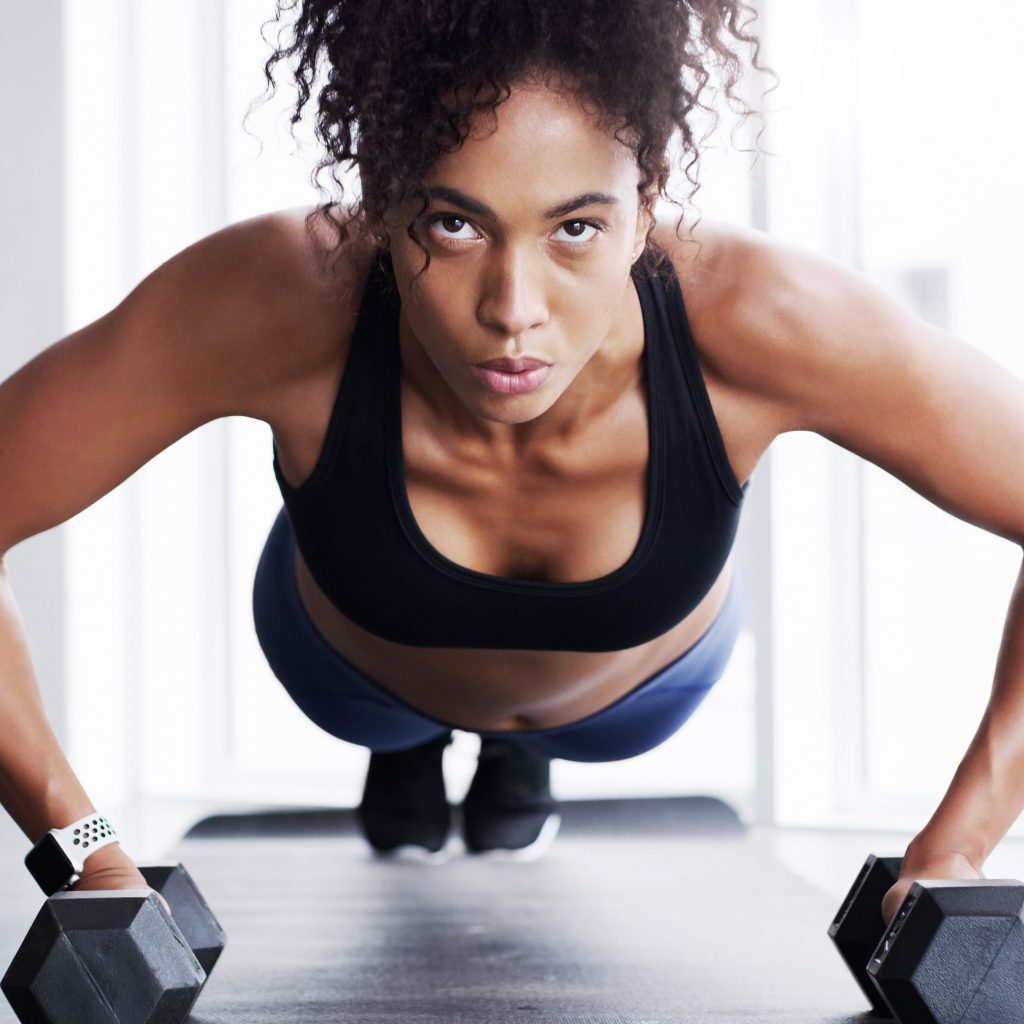It really pays to have a strong upper body in life, whether you’re lugging a heavy box up your stairs, heaving a suitcase onto a rack, or toughing out a plank sequence or Chaturanga in yoga. That extra strength in your arms, back, and shoulders helps you get through everyday life injury-free and feeling good. If you struggle to build upper-body strength, it can be frustrating to work this area and not get the results you want. We consulted Jennifer Nagel, ACE-certified personal trainer and CEO of Figured Out Fitness, to find out exactly what you should do to get a strong upper body.
Why Should You Strengthen Your Upper Body?
We already touched on some of the ways upper-body strength can aid you in everyday life, and Nagel said this is just one reason to work this part of your body. “We use upper-body strength in everyday movements such as pulling, pushing, and reaching,” she told POPSUGAR. “Building upper-body strength makes these everyday movements easier and safer.”
A strong upper body can also promote good posture. “Strong and balanced muscles of the shoulder, back, chest, and core are critical in your posture and body alignment,” Nagel explained. And healthy posture is about more than sitting up straight; it can help you prevent joint pain, arthritis, muscle fatigue, and injury, Nagel said.
Related: Your Abs and Butt Will Be Shaking by the End of This 15-Minute, No-Equipment Workout
How Can I Build Upper-Body Strength?
“Building strength is simply creating enough external force or resistance to create muscle adaptation,” Nagel said. Essentially, resistance work forces your muscles to grow stronger in order to adapt to the stress you’re putting on them; if you’re not adding external force, those muscles have no reason to get stronger. For your upper body, you can do this with resistance equipment, like dumbbells, resistance bands, and machines, or with bodyweight moves. And while the dumbbells and barbells get a lot of the attention when it comes to building muscle, Nagel said some of her favorite upper-body exercises are actually dynamic bodyweight moves. We’ll talk more about those below.
Consistency with your workouts is also crucial for building upper-body strength. Nagel recommends doing two to three strength sessions a week that incorporate upper-body exercises. Aiming for three to five sets of six to 12 reps for each exercise is a good place to start, but since every body is different, it’s always best to consult an expert, such as a personal trainer, for a plan that’ll help you achieve your individual goals. One key, though, “is to allow two to three days of rest in between sessions for your body to recover and to prevent overuse injuries,” Nagel said. Don’t neglect the recovery aspect, she stressed. “More exercise doesn’t always equal better. Make sure you take time off between your workouts and incorporate recovery methods such as stretching, foam rolling, and massage to stay injury-free.” You can also mix in cardio workouts on your non-strength days if you still want to get some exercise in.
What Exercises Should I Do to Build Upper-Body Strength?
Equipment like dumbbells and resistance bands are helpful for building upper-body strength, but not mandatory; bodyweight moves are great too. “Some of my favorite upper-body exercises are dynamic bodyweight movements such as bear crawls, crab walks, and moving push-ups,” Nagel said. “They build upper-body strength while working on mobility and coordination.” Compound moves like overhead presses, and push-ups are great too; “they work multiple muscle groups at the same time and they mimic everyday movement patterns.”
Ahead, check out seven of Nagel’s favorite moves and variations for building strength in your upper body. She recommends combining these exercises with lower-body or full-body moves for a more well-rounded strength workout.
Related: I'm a Trainer, and These Are My 10 Favorite Ab-Strengthening Exercises

